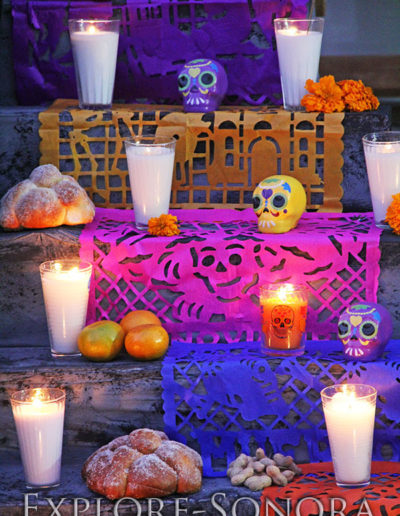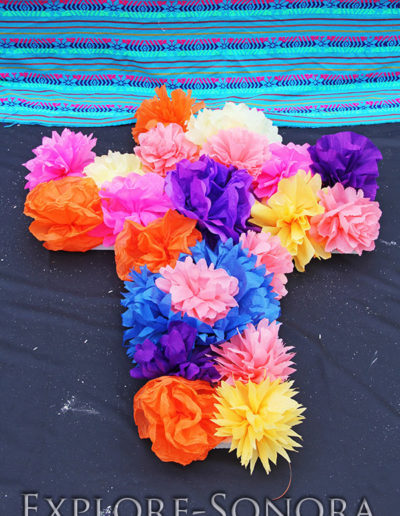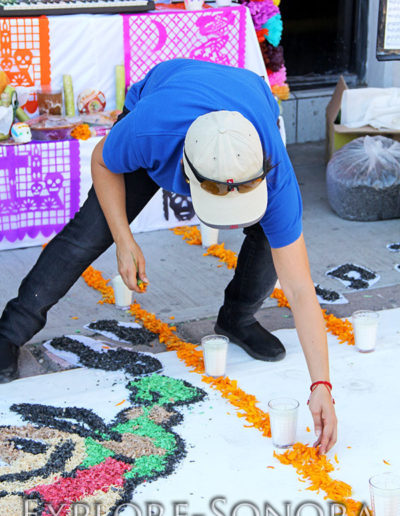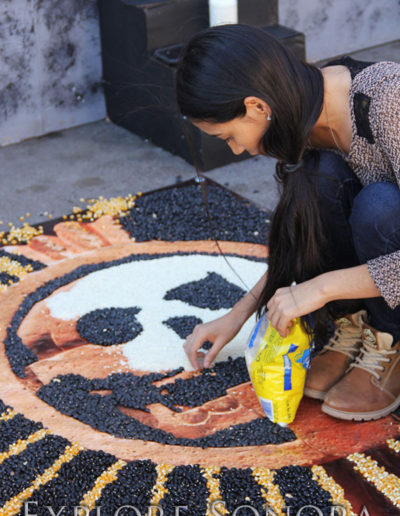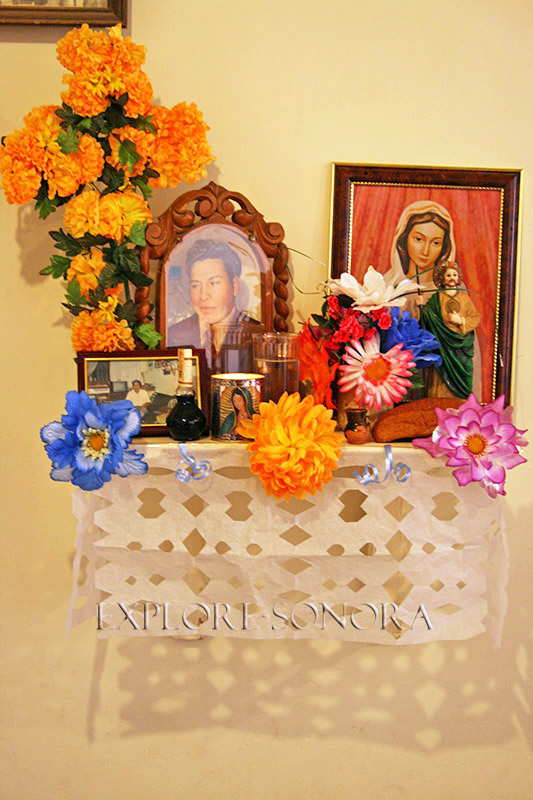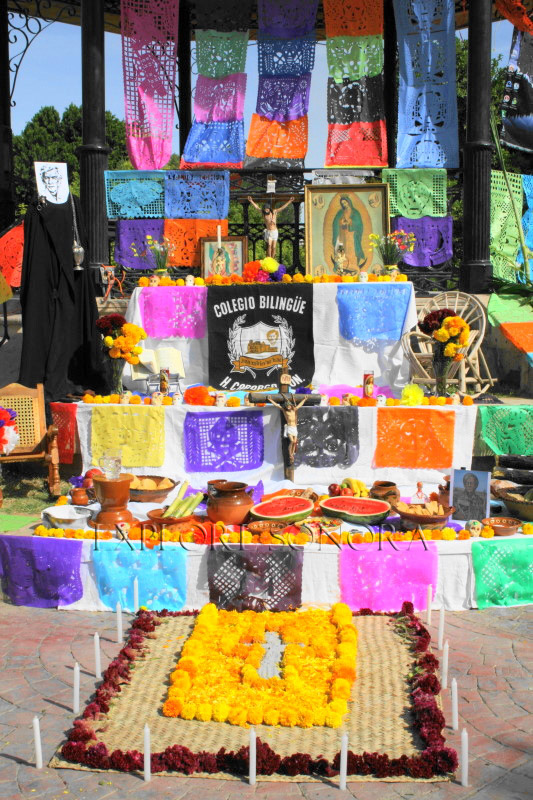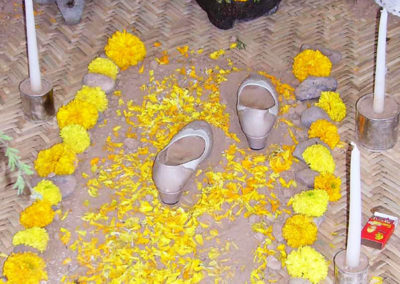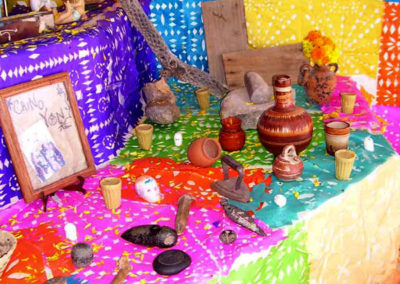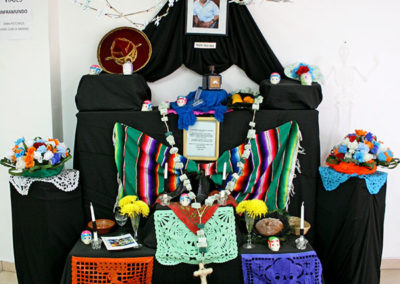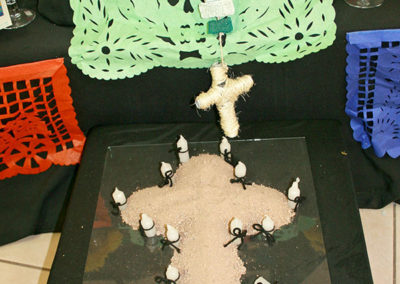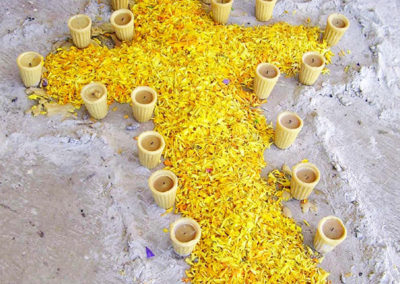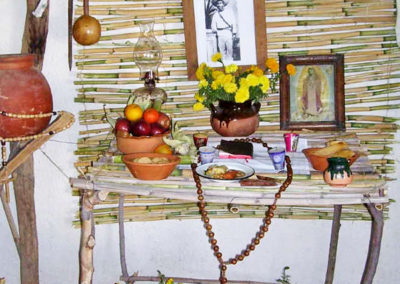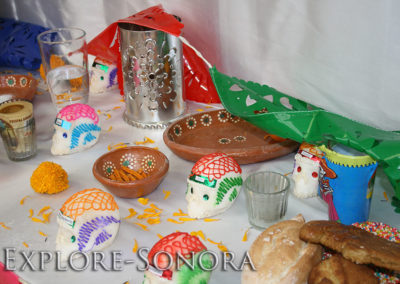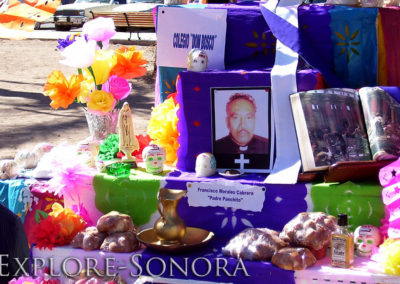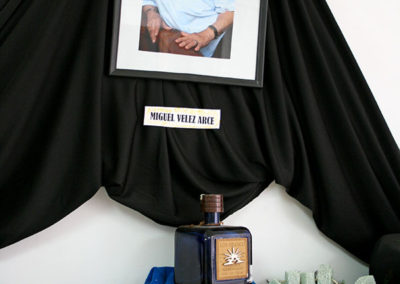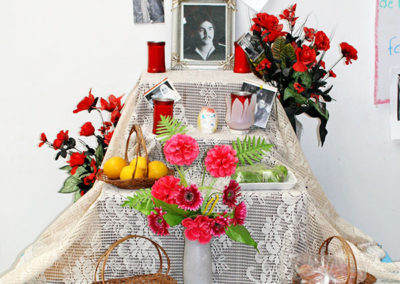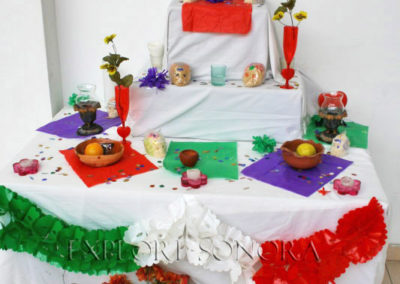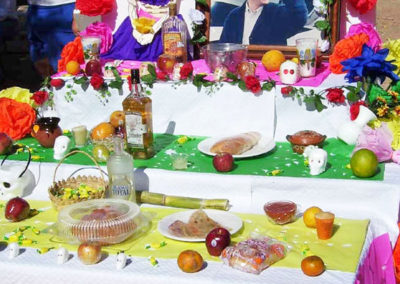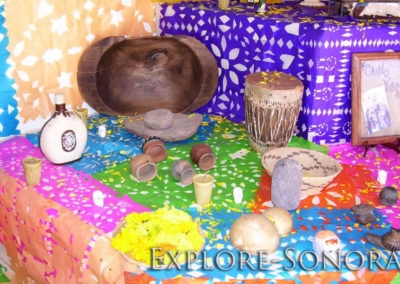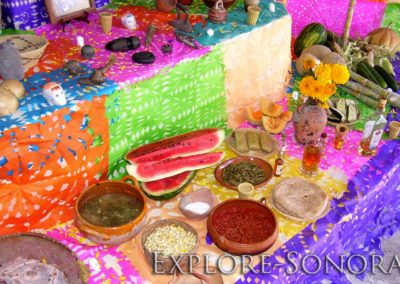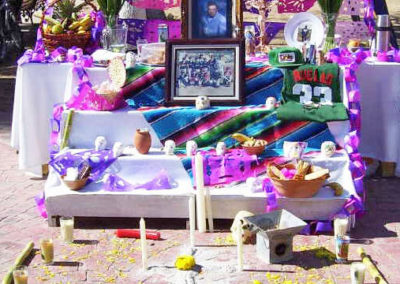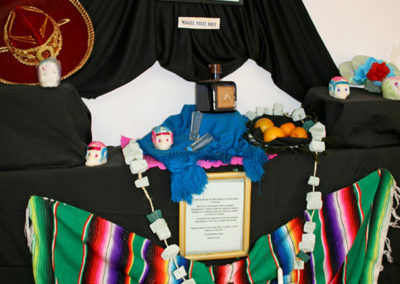Day of the Dead Altar Elements
Dia de los Muertos – Elements of Day of the Dead Altars in Sonora, Mexico
El Día de Muertos, the Day of the Dead, is a Mexican tradition that interweaves ancient aspects of pre-Hispanic culture with Christian beliefs to create a unique annual event of remembrance for the departed.
Day of the Dead altars, also known as ofrendas (offerings), are constructed and adorned to remember, honor and please the dead, are a central symbol of the Dia de los Muertos.
An altar may include a variety of symbols and items that are reminders of the deceased, or that were favorites of the honoree of the altar, but the following 12 items are considered to be fundamental requirements for an ofrenda.
The individual elements can be grouped into four categories that correspond with natural elements of water, fire, earth and wind.
Water to satisfy the thirst of the dead who visit; Fire burning in candles; Earth in food and other items for the departed; and Wind, which is represented by the papel picado, paper flowers and other paper elements that move with the wind.
Dia de Muertos Altar Elements
An altar for Day of the Dead may contain various items. The following examples are not obligatory, but are commonly used in the construction of an ofrenda.

Altar element – photo of the deceased
Portrait of the Deceased and Images of Saints
A photo of the deceased for which the altar is paying tribute is placed at the top and in the middle of the altar. Images of saints serve as reminders of their role as intermediaries between the living, the dead and the “beyond.”
Water
Representative of the purity of the soul, and it is believed that the water will quench the thirst of thirsty spirits, to reinvigorate their energies for their journey into the beyond.
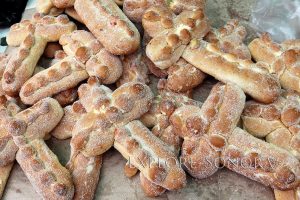
Altar elements – bread (pan de muertos)
Bread
The most common food offering for the spirits, the most commonly used form of bread is called “pan de muerto,” (bread of the dead), a round loaf of bread that may be adorned in three colors in the forms of quills and bones, and then sprinkled with white sugar.
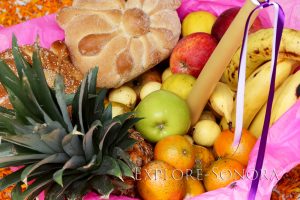
altar elements – fruit
Fruit
This is to delight the soul, to include seasonal fruits such as apples (which represent the blood), pumpkin, hawthorn, sugar cane, jicama, etc.
Other Food and Beverages
The altar will include beverages, dishes and casseroles that the deceased enjoyed on earth. In addition to pleasing the departed, this element helps to recall memorable aspects of the deceased, and often include pulque, liquor, chocolate, tequila, wine or posole, a drink made from corn and honey.

Dia de Muertos altar element – salt
Salt
It is believed that during the journey of the afterlife, the salt will prevent the body of the departed from breaking down as it travels along the winding road to eternity.
Cirios and Velas
These two types of candles each have their own meaning. The basic, unadorned parafin Cirio symbolizes the soul being alone, and are typically placed in a cross representing the cardinal points. Velas, which are typically in a glass container adorned with the image of a saint, serve as a guide to light the deceased’s way in the ascension of the spirit.
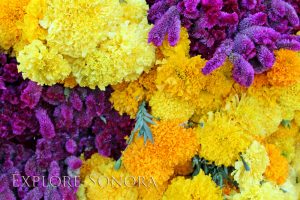
Altar elements – marigolds and terciopelo
Marigolds
The Cempasuchil is the bright yellow Mexican marigold, also known as the flor de muerto, is the main floral adornment for gravesites and altars.
Its strong scent and bright color (said to represent the Aztec sun god Tonotiuh) are believed to be an attraction to the spirits of the deceased as they come to visit their family on the Day of the Dead.
The colorful orange and yellow hues of the marigold (either fresh or dried) are also believed to help the souls of the departed to keep their way along the path in the afterlife. The petals of marigolds are often spread to cover a level of the ofrenda.
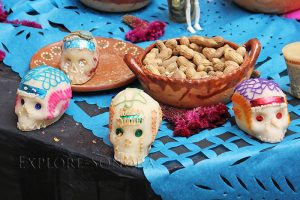
Dia de Muertos altar elements – sugar skulls
Sugar Skulls
As an example of the enlacing of pre-Hispanic and Christian elements that combine to define this tradition, the small sugar skulls symbolize Miquiztli, the God of death, as well as representing the victory of the Trinity. Sugar skulls typically have the name on the deceased on their forehead, are one of the most common items placed on the altars or offerings.
A Cross
The display of the Christian cross symbolizes the forgiveness of any remaining sins of the deceased. Typically this is a cross made of wood, but may also be made from flowers or other materials.
Copal
The special fragrance of this ancient origin resin from a tree of the same name, has two meanings: the first is to purify the place of evil spirits where the altar is located, and the other is a connection with the sky – it is believed that as the aromatic smoke of the copal rises, it makes a connection with the dead.
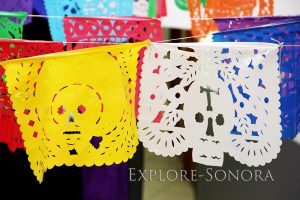
Altar elements – papel picado
Papel Picado
These are the colorful tissue paper rectangles that are cut to display Dia de Muertos designs and hung from string above altars, and places on the front and sides of altars
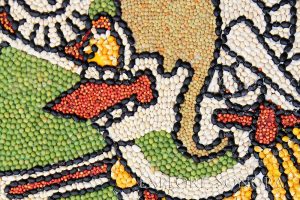
Altar elements – tapete
Tapete de Arena
Literally meaning “rug of sand,” a tapete de arena is a decoration on the ground in front of or on the side of a Day of the Dead altar. They can be made with sand, or with a variety of other materials like flowers, dirt, corn, beans, rice and lentils.
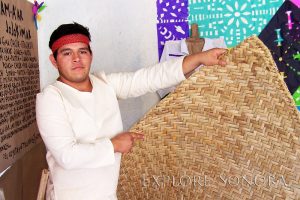
A man dressed in traditional Tohono O’odham clothing holds a petate
Petate
A petate is a bedroll woven from the palms of the petate palm, that is placed in front of the altar as a place to kneel in reflection, or pray.
Other adornments
A variety of colorful decorations, artwork, cardboard figures, ceramic skulls, crosses and other adornments made from real and paper flowers are added to the altar to add a festive element to this symbol of mourning and remembrance.
Sonoran Day of the Dead Adornments
Sonoran Day of the Dead Cemetery Photos

